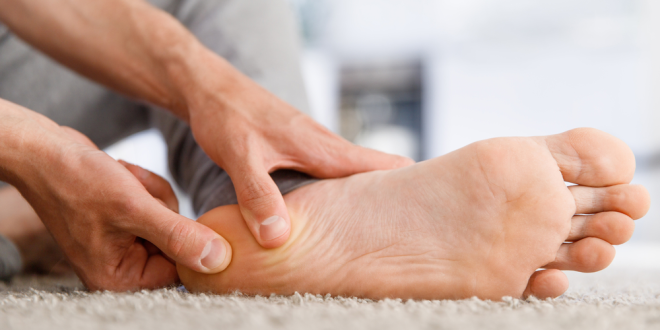A sore heel doesn’t always trace back to the obvious culprits. During first visits, many patients are surprised by the hidden reasons behind their discomfort. A plantar fasciitis specialist often uncovers patterns people never thought could strain their feet, and understanding these triggers is key to lasting relief.
Subtle Gait Changes That Place Extra Stress on the Plantar Fascia
A small shift in the way someone walks can create a ripple effect across the foot. Something as simple as rolling the ankle slightly inward or outward puts uneven weight on the plantar fascia. Over time, this imbalance forces the tissue to absorb more stress than it was built to handle, leading to irritation that lingers after long walks or runs.
A plantar fasciitis doctor often identifies these gait changes with a trained eye. The patient may not even realize they’ve adapted their stride due to past aches, shoe choices, or posture habits. Correcting these subtle patterns early prevents recurring strain and keeps the arch better supported with every step.
Workplace Surfaces That Increase Daily Strain on the Feet
Not all office or jobsite floors treat the feet equally. Hard surfaces such as tile, cement, or warehouse flooring amplify the impact on the heel throughout the day. Even those who wear supportive shoes may feel the effects when their plantar fascia repeatedly absorbs the shock of unforgiving surfaces.
For people who stand or walk on these surfaces eight hours a day, small adjustments can mean the difference between worsening pain and steady recovery. Identifying this environmental factor often explains why traditional treatments alone do not always resolve the issue.
Tight Calf Muscles That Shift Pressure Toward the Heel
Calf muscles that remain shortened from lack of stretching place the foot in a compromised position. The heel bears more weight than intended, forcing the plantar fascia to pick up the slack. Over weeks and months, this repetitive strain produces inflammation that refuses to fade with rest alone.
Stretching routines guided by a plantar fasciitis doctor help lengthen the calf and redistribute pressure more evenly across the foot. Specialists often note that patients with extremely tight calves experience quicker flare-ups and slower healing, making flexibility exercises an essential part of long-term management.
Unnoticed Weight Gain That Adds Hidden Load to the Arch
Even a modest increase in weight can add surprising pressure to the plantar fascia. The tissue supports every step, and extra pounds magnify the load carried by the arch. Patients may not link gradual weight gain to their heel discomfort, but specialists often highlight the connection during first evaluations.
Addressing this factor does not always mean drastic changes. Gentle exercise, improved diet, and gradual weight control reduce the strain while also supporting overall foot health. A plantar fasciitis specialist sees improvement in many cases once this hidden load is lifted from the tissue.
Sports Habits That Intensify Microtears in the Fascia
Repetitive athletic routines can quietly damage the plantar fascia. Runners who suddenly increase mileage, basketball players who make sharp pivots, or tennis enthusiasts with explosive starts and stops all place high stress on the heel. These movements cause tiny tears that accumulate faster than the tissue can heal.
Plantar fasciitis doctors encourage athletes to balance intensity with recovery. Stretching before and after activity, rotating sports, and wearing proper shoes tailored to the activity reduce the microtears that otherwise lead to persistent heel pain. Recognizing this link allows athletes to keep pursuing their passions without sidelining themselves with preventable injuries.
Standing Routines That Slowly Aggravate the Tissue
Long hours spent standing may feel harmless at first but eventually wear down the plantar fascia. Teachers, healthcare professionals, and retail workers often describe an end-of-day ache that turns into chronic pain over time. The arch is not designed to bear static pressure without rest, making standing routines a frequent but overlooked cause.
Specialists often recommend alternating weight between feet, taking short seated breaks, or using mats that absorb shock. These small adjustments make a big difference in protecting the fascia. For individuals who cannot avoid long standing shifts, a plantar fasciitis doctor may suggest custom orthotics for added support.
Old Injuries That Alter Movement and Trigger Plantar Fasciitis
Past ankle sprains, fractures, or knee problems can quietly change how someone moves. Even after healing, the body often compensates by shifting weight differently, placing uneven stress on the plantar fascia. What seems like a long-forgotten injury may in fact be the reason heel pain develops years later.
A plantar fasciitis specialist evaluates medical history alongside current symptoms to uncover these hidden connections. Correcting imbalances through therapy, supportive footwear, or targeted strengthening restores healthier movement patterns. Recognizing the role of old injuries helps prevent a cycle of recurring inflammation and discomfort.
 Posting Point
Posting Point

